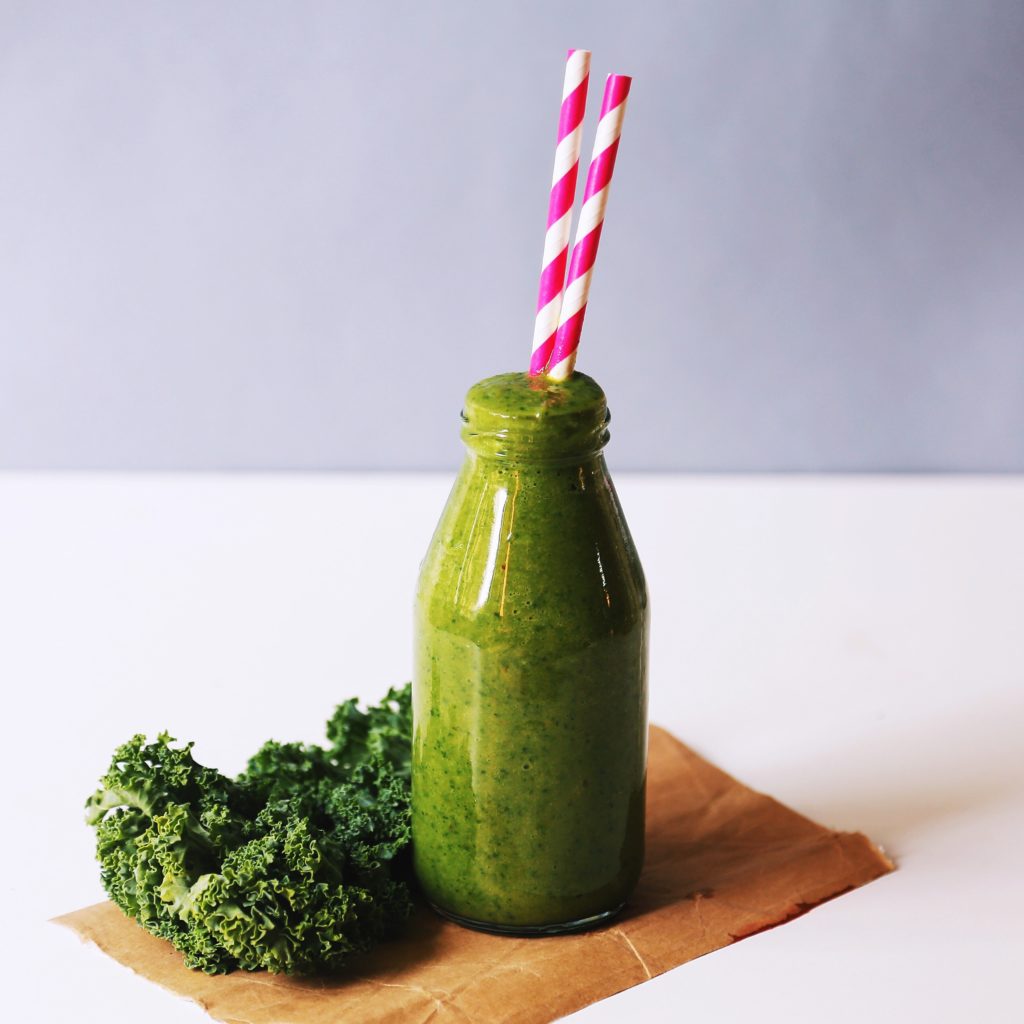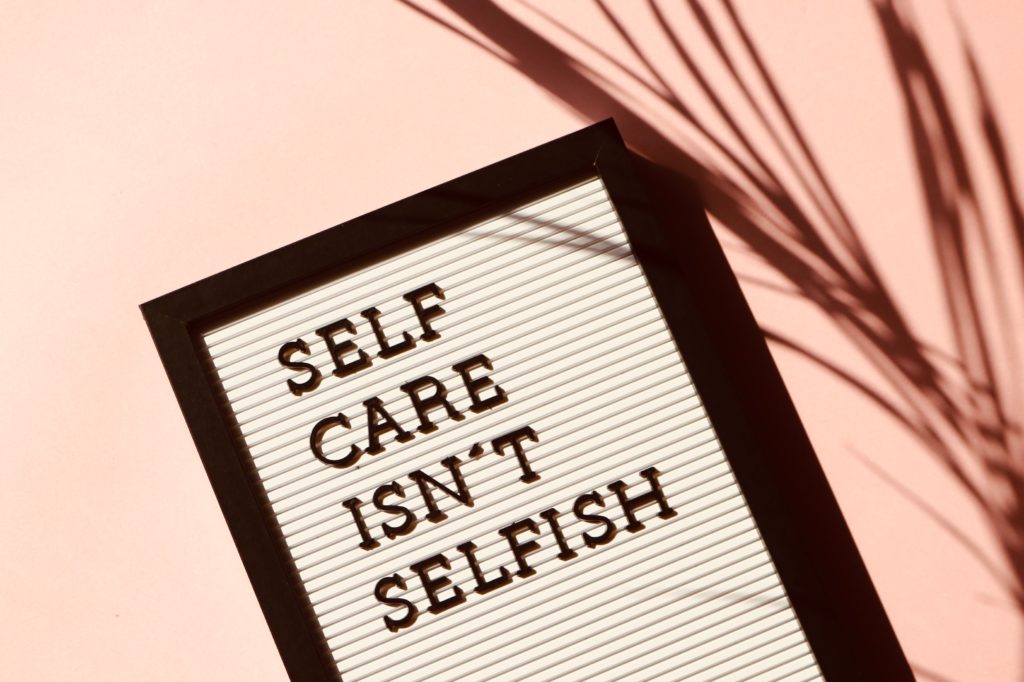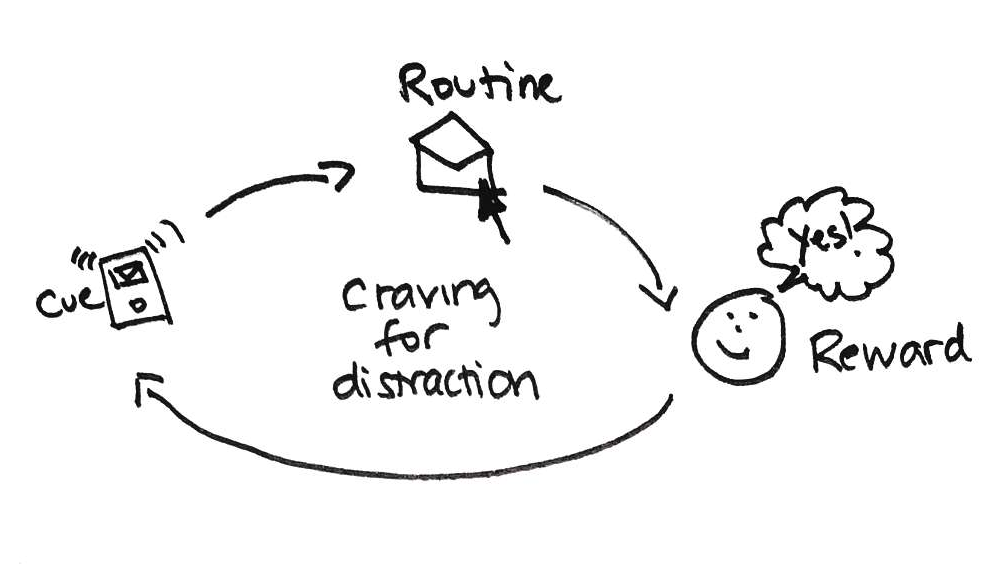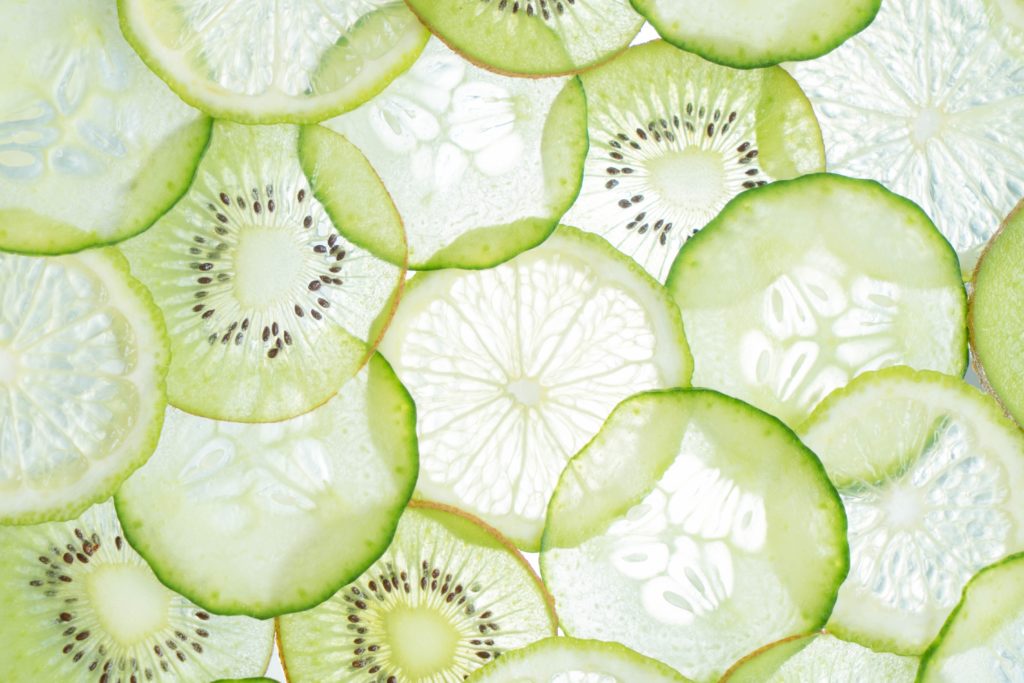
How Big Business Makes Food As Addictive as Cocaine: The Secret Science Behind Food Addiction And How to Beat It

“I eat all the time,” Sarah said with a nervous giggle. “I eat when I’m hungry, I eat when I’m not hungry. I eat to celebrate, I eat when I’m sad. I eat at night. I eat when my husband comes home.”
– Excerpt from The Power of Habit
Certain combinations of food are more addictive than others. Interestingly (and unsurprisingly) enough, the food industry has learned to exploit these things.
Just how addictive are these foods though?
In studies done on mice, to find out how hard they are willing to work for certain foods (and thus measure their desire for it), the breaking point for foods high in sugar and fat were a step below cocaine. Animals are literally willing to work almost as hard to get either one.
Haven’t We Been “Normal” Weight for Thousands of Years? So Why Are We Suddenly Over Eating? (Hint: Food Addiction)
I found the book The End of Over Eating because I was curious about one key question: how is it possible that the human body weight (which has stayed pretty stable for thousands of years) suddenly was not regulating itself?
I mean, in 1960 – women aged 20-29 averaged about 128 pounds. By 2000, the average weight of women in the same age bracket was 157 pounds.
For 40-49 year olds, it jumped from 142 pounds in 1960 to 169 in 2000.
Why? Doesn’t the body naturally want to maintain it’s own weight? Aren’t there built in mechanisms to prevent over-eating, since it’s damaging to the body’s health long-term?
Yeah, but the system only works well when you eat real food.
But the food industry has cleverly exploited three things that haywire our biology: Sugar, Fat and Salt.
These three things take advantage of the reward system of the brain which, when triggered, stimulates us to keep eating – and eating – and eating – and eating.
In animal studies, it has been repeatedly shown that the combination of sugar, fat, and salt (not just fat) is highly addictive and reinforcing – meaning you want to eat more of it, the more that you eat. [FYI – Rats just given extra fat in their diet won’t over eat or become obese. Yay bacon!]
In one study, a researcher added various amounts of sugar to five different dairy products – skim milk, whole milk, half and half, heavy cream, and heavy cream with safflower oil. The point of the various dairy products was that they each had varying levels of fat. Skim milk had almost no fat, while cream and oil contained more than 50% fat.
When people were asked to rate the ones they liked the best, low marks went to the sweetened skim milk (high sugar, low fat), and to unsweetened cream (high fat, low sugar). But when you mix the same amount of sugar into low-fat and high fat products, people prefer the higher fat mix with high sugar.
In other words, it wasn’t just fat or sugar. It was fat and sugar that was addictive.
***
In another study, researchers bred one strain of rats to overfeed when a high calorie diet was present, producing a rat prone to obesity. The other strain did not usually overfeed – an obesity resistant rat. The second group of rats naturally cut back their food consumption quicker than the obesity-primed rats.
But when both groups of rats were offered a creamy liquid that was high in sugar and fat, all of the animals ate without restraint.
Interestingly, increasing only the fat content of the rat’s diet won’t make the animal over eat or become obese. It’s the combination with sugar that makes it overeat.
***
A third study, done in humans, kept male subjects in a ward where their food intake could be measured. For the first few days they were fed a diet designed to keep them at their current body weight (which was around 3,000 calories since they were already overweight). They were given a diet that was 50% carb, 30% fat, and 20% protein.
The participants were then allowed to eat whatever they wished from two free vending machines that contained a variety of things like meats, cheese, bread, cereals, pastries, desserts, french fries, etc. The men were asked to follow their typical eating patterns as closely as possible.
Given the opportunity to eat without restriction, the participants ended up eating an average of 4,500 calories a day. One guy ate almost 7,000 calories. Not only did they over-eat, something interesting happened to their food ratios: they ate a lot more fat (usually coupled with sugar) and less protein. Their fat intake increased to 40 percent, and protein intake decreased to 12 percent.
These three studies are basically the long way of saying something that science knows quite well: given access to high-sugar, high-fat, high-salt foods, many of us will eat them in excessive amounts.
#boomshakalaka
Overeating is Not Your Fault: How the Food Industry Makes You Eat More Than You Think

“All of this has been processed such that you can wolf it down fast . . . chopped up and made ultra-palatable . . . Very appealing looking, very high pleasure in the food, very high caloric density. Rules out all that stuff you have to chew. When you’re eating these things, you’ve had 500, 600, 800, 900 calories before you know it. Literally, before you know it.”
-A food consultant, when asked what’s the deal with food found in most restaurant chains
When we see food we like, or see something that reminds us of food we like, the brain immediately releases dopamine which starts that craving process. And once we get that food in our mouth, it again releases even more dopamine.
Ordinarily, after we eat the same food over and over, habituation sets in, dopamine levels decline, and the food loses some of its capacity to get us “high” again. But, interestingly enough, cocaine [ and the foods we’re talking about ] don’t cause the brain to curb its dopamine response at all.
Cocaine will not result in habituation – so a person who uses it will continue to release dopamine, almost at the same amount as the initial level.
Interestingly, after feeding rats a high-sugar, high-fat chocolate drink for a period of time, the dopamine response did not diminish. There was no habituation.
Scary.
There are a few main ways that smart food marketers are having you eat a lot more than you think:
- Processing
- Hidden Sugar, Fat & Salt
- Added Chemicals and Flavors
Processing is one of the ways that the food industry sneakily makes you eat more.
Processing basically removes the bran, husk, shell, fiber, and some other things in your food – making it easier to eat a lot more and a lot quicker. It’s baby food for adults.
Boneless wings? So you can scarf em down.
Deep fried anything? The water content is replaced with fat ==> Creating that crispiness you like so much, and a much stronger flavor.
Buttery, creamy rolls and sauces? Fat helps bring out the flavor, and also gives that soft “melt in your mouth” texture.
Hidden sugar and fat is another way that virtually all the big food companies have secretly made your food more addictive, as well as more fattening.
Apple sauce, breakfast cereal, even pasta sauce all have added sugar.
Virtually any sauce or dressing you like has added sugar and fat. Why do kids only like ranch dressing so much? It’s sweet.
Things that originally have a high water content (like veggies or chicken wings) are fried which removes the water and replaces them with fat. If you get wings in a restaurant, they’ve probably actually been fried 2-3 times. One at the factory, and multiple times at the restaurant.
Consumers even started getting smart and avoiding the word “sugar” on labels – so companies started putting in 4-5 different types of sugar – honey, molasses, high-fructose corn syrup – so that sugar could get pushed further down on the ingredient list.
Some breads even have a lot of sugar – McDonald’s hamburger buns are on a sweetness level of 7 out of 15.
Ketchup is around an 8 or 9, while Pizza Hut pizza sauce is close to a 10 or 12 out of 15.
Added sugar is everywhere – and not just in your frosted flakes.
Apple sauce, breakfast foods, your morning orange juice that is slowly killing you, you name it – added sugar.
Added chemicals and flavors are another way to create flavors and get you hooked.
Hot chocolate, for example, has almost no chocolate in it. It’s a high school science experiment. If that terrifies you, it should. It’s basically made up of some dairy replacements (for that creamy quality) and then has added sugar and artificial flavors.
There are billion dollar businesses designed to make food taste like something that it’s not.
So instead of including dairy products in your food, the artificial flavoring companies can remove that and just make it taste like there’s dairy in there.
Trying Not To Gain Weight is Fighting a Carefully Orchestrated System

This is all really the long way of saying this: everyday you are fighting a carefully orchestrated system that has the explicit goal of having you eat more food.
There are billions of dollars of money and research that go into getting you to eat more of a company’s product. End of story. For your health – these are the “bad guys” – capitalism at its finest.
Alright – so now that you know there is a game being played around you – it’s time for me to show you how to beat the system and drop the addiction.
If you find yourself craving for food all the time – or if you have a wicked sweet tooth you just can’t fix – this is the part you really want to pay attention to.
How to Break the Cycle: It’s Not About Willpower – It’s About Biology
I want you to repeat this sentence over and over: It’s not about willpower, it’s about biology.
Ultimately, breaking free from the addiction to sugar, fat [ the bad kind, not the good kind ] and salt lies in one thing: not eating them. But how?
When we sit around triggers or cues – we begin to crave these foods, the craving releases dopamine, which then gets us to eat the food, which releases more dopamine.
Willpower is useless here – it would be like telling a drug addict to just “fight” the heroin craving. Instead, start thinking about how you can set up systems that prevent you from failing.
The vast majority of people passing on this stupid “willpower” advice are people who have no direct experience dealing with anything remotely related to what you are dealing with. It’s just a stupid piece of blanket advice that hasn’t been street-tested.
Here are 3 systems that will help you kick the addiction for good. Remember, I’m not going to give you some “willpower” BS or “just do it” crap advice.
The 3 Systems:
- Awareness
- Habit Re-Training
- Food Rehab
#1 Awareness (Aka The Awesome-sauce Index Card Method)

By far the most effective technique I’ve seen involves Awareness. You know awareness – like knowing what kind discussions and people piss you off. Like knowing what kind of comments from your boss make you want to throw your computer at him.
Many of your responses to life’s events are actually not-conscious, but are pre-programmed.
Brownies on the counter? Eat ’em.
Get home from work? Immediately sit down on the couch.
Your friend brings up your dad? Get pissed off.
Your spouse talks about money? You shut down.
A friend starts giving you diet advice? Take it personally, get defensive, and lash out.
In other words, so many of our responses to life are caused by triggers. But we can control our responses with some training. Here’s how.
I recently spoke with someone who is dealing with a real food addiction. This isn’t just “oh, a brownie here and there” kind of food addiction.
This is an all-encompassing, “I don’t understand why food controls my life, but it just has this power over me” kind of food addiction.
So, for a week I had her try out the index card method, and after a week we had some incredibly important data, we learned:
- She “craves” food when watching TV, aimlessly browsing the computer, or sitting around bored at home
- She “craves” food when she gets angry or sad
- She “craves” food late at night when she’s doing homework
Guess what? We found two key triggers (cues) of her behavior: Boredom & anxiety.
Now she knew that anytime she felt bored, the craving would arise. She also knew that any time an event that made her angry or sad showed up, she would get a craving.
What information does that give her? Everything! She now has a choice of how to react.
She knows to A. Avoid those situations and B. If they occur, she now can consciously decide how to act, whereas before it was just an automatic habit with no conscious processing.
Here’s how you do it:
For one week, you carry around an index card and every time you get a craving, you write down two things:
- What event immediately preceded the craving (what were you doing? working? watching tv? playing on the computer? just getting home from work/ the gym?)
- What kind of mood were you in? (Were you bored, tired, angry, sleepy, etc.)
Do this for one week.
At the end of the week you’ll have data that will blow your mind – and it will serve you for the rest of your life.
You’ll know if moods (like boredom) make you reach for food.
You’ll know if certain times of day are triggers – like getting home from work.
You’ll know if certain things make you think of food – like a billboard near your home.
From there it’s easy to experiment with certain methods to fix the problem. In other words, if you’re actually just bored, you can do something interesting, instead of eating cookies. This is one of the origins of the “why the hell am I standing in front of an open fridge and don’t know what to do” syndrome.
#2 Swap the Habit Routine
If you haven’t read this post yet (it’s the most important article you’ll ever read in your life), go read it.
Ultimately, over-eating becomes a habit just like anything else. Sweets cravings become habits and addictions.
There are a couple ways to fix your habits:
A. Avoid cues and triggers (if you’re a compulsive smartphone user, turning off notifications like lights, beeps, push notifications, etc. and putting it out of site will break that habit).
The other thing is that if you know that passing a certain store (like a bakery) in the morning leads to craving those delicious doughnuts or half a loaf of bread, then don’t drive near it. Take another route to work.
If going out to lunch at work means eating 1,500 calories of pasta and 3 glasses of red wine, either opt-out (if you can), or know that you usually binge at business lunches and plan accordingly.
B. Change the routine

Remember the habit cycle?
Either you can turn off the cue – which won’t cause you to engage in the behavior, or you can change the behavior.
So for example, if you’ve done the index card test and realized you eat a lot when you’re bored, like watching TV, you know that you are craving “stimulation” and something interesting to do.
Then you just swap out the habit with something else – turning off the TV and leaving the house to go do something you want, getting up to talk to someone, reading a good book, or finding something more stimulating, like a video game, exercising, or meeting friends for a beer.
The key for breaking bad habits lies in three things:
- Keep the same cue/trigger (“I’m bored watching TV”)
- Change the routine (“Instead of going to get snack, I realize I’m bored, so I’m going to leave the house and grab a beer with my friends.”)
- Keep the same reward (“I’m no longer bored – I’m having fun”)
The important thing to remember is that bad habits really never go away – the neural pathways are always there, just waiting for the cue and waiting for you to relapse.
The key is to learn to re-wire the routine, and/or avoid the cues and triggers that cause you to engage in the habit in the first place. And awareness (See #1) is one of the key ways to do that.
#3 Food Rehab

Food rehab basically involves avoiding food cues and triggers.
There are 4 main things to keep in mind, that I also talked about in What Foods Do I Eat to Lose Weight?
- If it’s there, you will eat it. Don’t buy sweets to put them in your house. I guarantee if there is a plate of brownies next to me, I am going to eat them all day.
- Schedule meals and eat regularly, low blood sugar often triggers sugar cravings. Do not let yourself go longer than 3 hours without eating a planned, scheduled meal. When you’re crazy hungry is often when cravings come up.
- Eat protein and fat at each meal. Why? They keep you full.
- As best you can, don’t eat out. I just spent 3,000 words telling you how many restaurants are engineered to make you eat more, and are loaded with crap that screws with your brain chemistry. Do I need to go into more detail? Save it for special occasions.
So What Now? The Recap
There are a few things I want you to remember here, the 5 key takeaways behind this whole thing.
- Food is a big business. There are millions of dollars spent finding out how to get you to eat more of someone else’s product.
- Food addiction functions almost identically to a drug addiction, affecting the opioid receptors of the brain – the reward system. It’s a joke to try and tell someone to “just use willpower” and fight a food addiction or try and diet. If I catch you giving that advice I’m going to slap you with a wet fish! Just kidding 😀
- To beat food addictions, you ultimately need to go cold turkey and totally cut yourself off – the trick is how. You probably already knew that – the what – the how is much harder, and that’s what I hope this article helped you do.
- To go cold turkey and get off of addicting foods, use three main systems: A. Awareness, B. Habit Re-Training, and C. Food Rehab. When you learn the triggers and cue associated with food or sugar cravings, you already are one step closer to controlling them.
- When you no longer eat sweets and addictive foods, your sweet tooth goes away. It’s true! Like drugs, you will stop craving them the less you eat them.
“Just Use Willpower” Is the Dumbest Piece of Advice To Give Someone
I think we need to start a movement discouraging the “just use willpower and discipline” approach. Why? For starters? It doesn’t work.
Second, it’s usually the people who don’t have experience giving the advice: “Oh, you just don’t have any willpower.”
Would you tell a drug addict, “Oh just fight the cravings man! You just need to be stronger!” No, of course not.
The addiction to sweets and foods is real and biological. We’re also going up against companies that still are finding ways to make food more addictive, even in the middle of an obesity epidemic.
I hope this will open your eyes a little bit as to what really goes on when you get cravings (for sugar, fat, salt, or anything else), and why, and most importantly – how to beat them.
Try it and let me know how it goes –
— Alex

I have a couple of questions.
Firstly, fat people have existed since waaaay before the invention of all these processed foods & chemicals. How do you explain their existence?
Secondly, if processed foods cause obesity, how come there are thin people who eat these all the time but never become fat?
Lastly, if processed foods are indeed addictive, how come there are people (like my grandmother) who have no problem practicing moderation with such foods, and remain thin their entire lives?
Thanks in advance. 🙂
Hey Q,
There’s no doubt that overeating (even of healthy food) leads to fat gain.
The sad truth is that people with “thin genetics” can get away with eating a lot of crap, and they’ll stay thin – BUT this does not mean that they are healthy. You can be thin and still have heart disease (or a heart attack), cancer, etc.
It’s not just processed foods – if you only eat one meal a day, you’re not going to have a caloric excess causing weight gain – even if the entire meal is processed.
Everyone is different – habits, discipline, other hormonal factors, how much sleep they are getting, the stress in their lives. There are so many factors influencing food addiction.
Hope that helps!
“There’s no doubt that overeating (even of healthy food) leads to fat gain.”
But, according to what you have said, unprocessed/healthy/whole foods are incredibly difficult to overeat on. And this website is based on the premise that if one simply eats these foods, they will lose weight and/or experience improved health…without counting calories. However, when I look at historical photos from centuries past, I see some chubby people, and it makes me wonder how they did it. I’m not really talking about “obese” individuals, but those who would fall into the “overweight” category. You see, I believe that, with the exception of the severely obese, body size is dependent upon genetics, not the type or quality of food we eat.
“The sad truth is that people with “thin genetics” can get away with eating a lot of crap […]”
So you believe (I’m assuming) that people can have “thin genetics” but cannot have “fat genetics”? Keep in mind, by “fat” I mean those who fall in the “overweight” category. Obesity, super obesity, etc, is obviously a result of poor food quality, as opposed to any genetic factors.
“Everyone is different – habits, discipline, other hormonal factors, how much sleep they are getting, the stress in their lives. ”
And genetics. 🙂
I quit smoking a couple of years ago and was certainly addicted to nicotine and I don’t think there’s any doubt nicotine is addictive. Yet I have known 2 people that could smoke now and then, and then go weeks without a cigarette. Some people seem immune but that doesn’t mean this food isn’t addctive